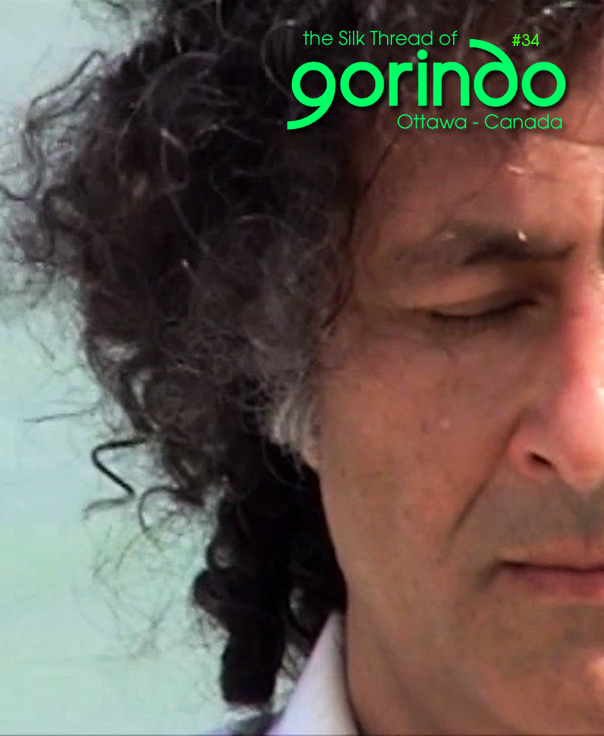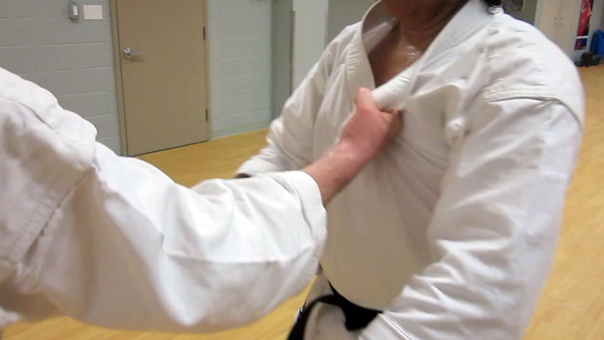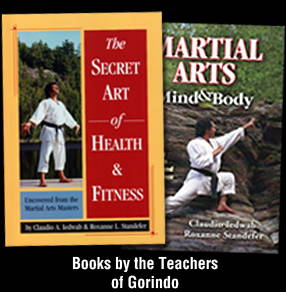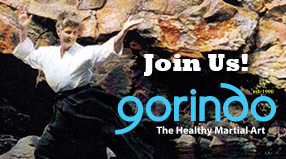
The Silk Thread of Gorindo - Ottawa - Canada
- What's Self-Defense - Part 2
Cover 'Gorindo - Atlantic Ocean' - Photo by ©2013 Claudio Iedwab
What's Self-Defense - Part 2

Fear and anger are the worst enemies of the martial artist. That is why the training must address these issues by preparing students to recognize, accept, and overcome them. Confidence and serenity come from having a healthy strong body, trained reflexes, and experience in meeting an attack. The martial artist claims the right to walk without disabling fear and yet still exercises caution. The student leaves the dojo armed with technique, spirit, and a well-balanced character that knows its limitations.
Many people consider martial arts training after they have been attacked or made to fear for their safety or that of their families. They might, for example, enter a short course of self-defense and think that they have studied martial art. They have learned a few techniques, but they have not really been empowered. What they truly require to live comfortably within their environment, is the power that comes from feeling healthy and strong. This gives them confidence in their own abilities, belief in their fundamental right to exist in the universe without hindrance, and the mental stability to shake off dark imaginings.
Crime studies have shown that most assaults occur between family members, estranged partners, by aggressors that are known to the victim. Anonymous attacks do occur, however, and in most cases the attacker chooses a person who looks like a victim. Walking confidently and carefully seems to discourage would-be attackers. It is ironic that the more one trains in this type of self-defense, the less likely one is called upon to use it on the street.
Martial artists rarely practice in a negative, frightened, or angry mind set. They feel that they are learning something fun, and that gives proven physical results, so they feel good. Although clearly the body is participating in the act of punching, kicking, grappling, or throwing, the spirit is not angry or unhappy. Quite the opposite kinds of energies are at work here in the dojo, as we have discussed in previous chapters.
Even while the intellect absorbs subtle nuances of technique, and knowledge of where exactly in the human body a counterattack will have the most effect, the brain remains clear of harmful intent. Students are admonished to focus their entire being on the flow of technique. They will defend themselves with maximum effort and yet in the visualization of the attack there is not an iota of hate. This is different from some of the more popular self-defense courses, in which participants are encouraged to use their fear and rage against attackers. Although some psychological therapists recommend such practice for those immobilized by fear or trauma from previous attacks, this technique is a distortion of the desired mind set of martial arts.
Martial artists are trained to expect the unexpected. Part of this is developing an alertness and preparedness that comes from being relaxed and comfortable with oneself. Attacks can happen in public spaces in broad daylight and also from sources one least expects. Self-defense against “bullies” might involve physical and mental attacks from strangers on the street, drivers in traffic, co-workers, schoolmates, and even pushy people in the supermarket aisles.
Rather than encouraging paranoia or abrasive attitudes, those involved in the martial arts seek to project a positive outlook that is helpful, confident, and capable. This allows them to respond in a manner appropriate to the perceived offense, rather than overreact, as often happens in such cases.
Teachers who stress only the sport aspect of the martial arts or insist that the only way to train is through combat-oriented, self-defense routines, are doing a disservice to their students. They are failing themselves and the general public by not sharing all that the martial arts can offer. They have abandoned the traditions and goals of the founders of these systems, who intended that the health and fitness benefits be available for everyone. The masters believed these benefits to be the most important aspect of their disciplines and that from good health, all else would follow.
Excerpt from “The Secret Art of Health & Fitness – Uncovered from the Martial Arts Masters” published book by Claudio Iedwab & Roxanne Standefer available at askSensei.com >>
Photos by ©2013 Roxanne Standefer
- What's Self-Defense - Part 2
« Click the Subscribe link on the left




